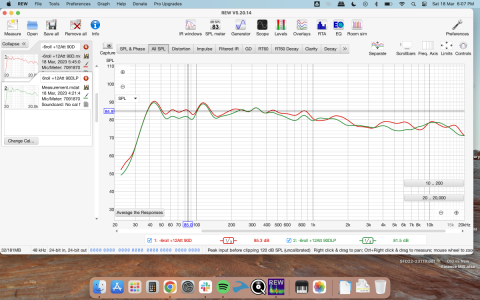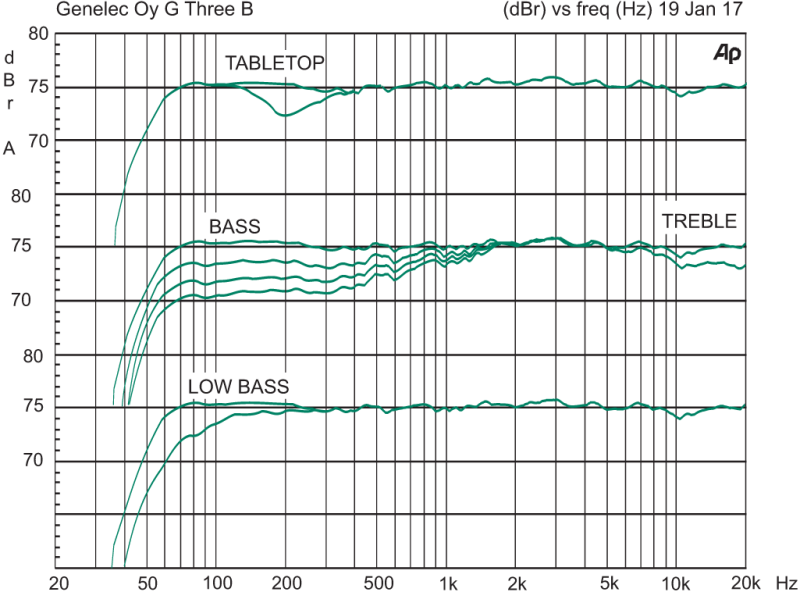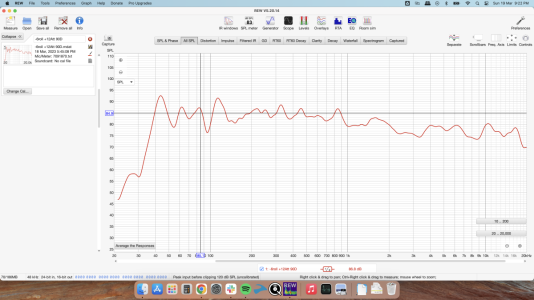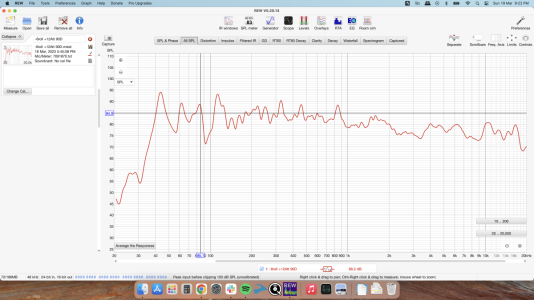Dear FMs,
I am trying to play with REW, speaker placement & equalisation with my Genelec G3s & 7040A subwoofer. My knowledge & understanding here is extremely limited & even though I can take measurements looking at youtube videos; I am not really sure what I am looking at.
Please bear with me - I took some measurements at the listening position & I have sadly lost that graph - but after a bit of fiddling with the phase of the sub (automatically crossed at 85HZ) & dip switches alone - leaving all things the same - I got the graph in Green. Playing with the placement - I got the graph in red. Please have a look.
To my eyes & ears - the "red" graph and the resulting sound - seems better. However I am not entirely sure - what I am looking at - can someone take out the time to explain OR if needed - if I can provide more information if guided?
I know there are many posts on this; however, as I am completely illiterate in this part of the tech, I was hoping for some direct advice on my specific situation?
****I have not yet incorporated the RME in the system, as I wasn't sure where to apply the EQ. -to me this graph "RED graph - seems pretty linear between 35-800Hz & after that it doesn't look too shabby either, but I am not entirely sure. Looking forward to some great opinions.
Thanks!
Thanks!
I am trying to play with REW, speaker placement & equalisation with my Genelec G3s & 7040A subwoofer. My knowledge & understanding here is extremely limited & even though I can take measurements looking at youtube videos; I am not really sure what I am looking at.
Please bear with me - I took some measurements at the listening position & I have sadly lost that graph - but after a bit of fiddling with the phase of the sub (automatically crossed at 85HZ) & dip switches alone - leaving all things the same - I got the graph in Green. Playing with the placement - I got the graph in red. Please have a look.
To my eyes & ears - the "red" graph and the resulting sound - seems better. However I am not entirely sure - what I am looking at - can someone take out the time to explain OR if needed - if I can provide more information if guided?
I know there are many posts on this; however, as I am completely illiterate in this part of the tech, I was hoping for some direct advice on my specific situation?
****I have not yet incorporated the RME in the system, as I wasn't sure where to apply the EQ. -to me this graph "RED graph - seems pretty linear between 35-800Hz & after that it doesn't look too shabby either, but I am not entirely sure. Looking forward to some great opinions.
Thanks!

Thanks!




